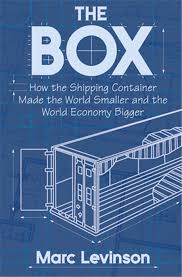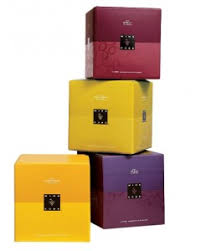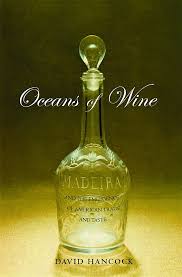 Wine enthusiasts spend a lot of time and money on magazines and guidebooks and I guess they are never sure if they’re getting the best advice. One of this blog’s most common referring links is the Google search query “world’s best wine magazine?” Want to know the answer? Read on.
Wine enthusiasts spend a lot of time and money on magazines and guidebooks and I guess they are never sure if they’re getting the best advice. One of this blog’s most common referring links is the Google search query “world’s best wine magazine?” Want to know the answer? Read on.
If you were going to read just one wine magazine, which one would it be? I decided to use my university students to try to find out. They are plenty smart and know a lot about wine, but they don’t (yet) spend much of their time reading these publications. Perfect subjects for a little media analysis experiment.
Three Ideas of Wine
I passed out copies of perhaps the three most influential wine magazines on the planet and asked my students to analyze them in terms of point of view, intended audience and, of course, which one they would want to read.
The three magazines are Wine Spectator, Decanter and Wine Advocate. Wine Spectator has the highest circulation of any wine magazine in the United States and probably the world. Decanter, a British publication, sells fewer copies, especially here in the U.S., but has global reach.
Robert Parker’s Wine Advocate is a subscription-only publication; most people don’t actually read the Wine Advocate, they just see the rating numbers and blurbs on Wine Wall shelf talkers promoting particular bottles. It’s very influential despite its limited distribution.
The magazines are different in almost every way. They certainly represent three different ideas of wine. Which is best? Well, that depends.
Wine Spectator
 My students quickly labeled Wine Spectator a “lifestyle” magazine and this isn’t just because it has non-wine or tangentially-related-to-wine “lifestyle” articles about food, travel, celebrities and so forth. The advertisements were the giveaway to them. While many wine companies advertise in WS, so do the producers of many luxury and designer products.
My students quickly labeled Wine Spectator a “lifestyle” magazine and this isn’t just because it has non-wine or tangentially-related-to-wine “lifestyle” articles about food, travel, celebrities and so forth. The advertisements were the giveaway to them. While many wine companies advertise in WS, so do the producers of many luxury and designer products.
(Most wine mags are lifestyle publications, they just have differing ratio and proportion of wine, wine-related and pure lifestyle editorial content. It would be interesting in give the students Wine Spectator, Wine Enthusiast and, say, Wine & Spirits to analyze regarding wine versus lifestyle emphasis. Maybe next term.)
Taken together, the editorial content and the advertising (plus the “coffee table” large format) gave my students a strong sense of a plush lifestyle publication. Wine is part of that world, they said, but not the only part of it. Some were attracted to this lifestyle image and other repulsed. They all found it fascinating.
Decanter
 Decanter’s cover boldly proclaims that it is “The World’s Best Wine Magazine.” Is it?
Decanter’s cover boldly proclaims that it is “The World’s Best Wine Magazine.” Is it?
Decanter is a lifestyle magazine, too, but that’s not what struck my students. Compared to Wine Spectator they noted a more specific wine focus and talked about finding deeper analysis of wine regions and issues. I’m not sure if this is really true or if it reflects Wine Spectator’s high advertisement page count, which might make it seem like there is less wine content.
But for whatever reason Decanter seemed more seriously interested in wine as opposed to lifestyle, according to my students.
Decanter has a different approach to wine ratings, too. Whereas Wine Spectator has many wine reviews in the back covering new releases from the U.S. and many international regions, Decanter typically features in-depth review articles on just two regions. You get more breadth of coverage with Wine Spectator and more depth with Decanter.
Wine Spectator made good browsing, one student said, and sometimes that’s just what you want, but Decanter would be better to read.
Wine Advocate
 My students were shocked by Wine Advocate. Nothing in their experience had prepared them for a “just the facts, ma’am” wine publication. Black type on tan paper. No photos. No ads. Page after page of winery and wine reviews, focusing on three or four regions in each issue.
My students were shocked by Wine Advocate. Nothing in their experience had prepared them for a “just the facts, ma’am” wine publication. Black type on tan paper. No photos. No ads. Page after page of winery and wine reviews, focusing on three or four regions in each issue.
Not for browsing. Not for reading. You have to study Wine Advocate to get anything out of it they said.
Who reads Wine Advocate? No one would read it for pleasure, according to the students. (I disagree — geeky baseball fans read columns of statistics on their favorite sport. I think there is a similar wine reader.) You would read it for business — because you are a wine retailer, distributor, investor or maybe own a restaurant. This, they said, was a magazine for readers with a serious professional purpose.
The World’s Best Wine Magazine?
 So which one is the best? I know my answer. If I could only read one it would be Decanter because I think it is more focused on the supply and demand issues I write about. It’s a wine magazine written by and maybe for “Masters of Wine” who care a lot about commercial concerns.
So which one is the best? I know my answer. If I could only read one it would be Decanter because I think it is more focused on the supply and demand issues I write about. It’s a wine magazine written by and maybe for “Masters of Wine” who care a lot about commercial concerns.
Unfortunately, Decanter’s specific consumer wine advice is mainly irrelevant to me since the British market it covers is so different from my Wine Wall here in the United States. Very few U.S. wines (apart from the big multinationals) successfully break into the British market, for example, and so we get little space in Decanter compared to wines from Europe and Australia. The market here is just the reverse.
My students weren’t willing to choose a “world’s best wine magazine.” They could see strengths and weaknesses in all three. One student said it boiled down to a trade-off between accessibility (Wine Spectator) and authenticity (the more detailed analysis of terroir you find in publications like Wine Advocate) and there’s no perfect balance between them.
In wine, as in many other areas of life, we want both accessibility and authenticity and I guess my students have already become both surprisingly self-aware of their position in this struggle and skilled at negotiating the complex space it creates. Interesting.
World’s best wine magazine? No such thing. It depends on who you are, what you are looking for and your particular idea of wine.
 The end of the year is upon us and you know what that means! Time to wrap those holiday gifts and time for Wine Spectator, America’s best-selling wine magazine, to announce their list of Top 100 wines for 2015.
The end of the year is upon us and you know what that means! Time to wrap those holiday gifts and time for Wine Spectator, America’s best-selling wine magazine, to announce their list of Top 100 wines for 2015. President Obama’s recent trip to Africa (including his much publicized pilgrimage to South Africa) presents us with a good opportunity to reassess our views. Africa has its problems and challenges (don’t we all!), but also successes and opportunities. This is true generally and, thinking specifically of South Africa, about wine.
President Obama’s recent trip to Africa (including his much publicized pilgrimage to South Africa) presents us with a good opportunity to reassess our views. Africa has its problems and challenges (don’t we all!), but also successes and opportunities. This is true generally and, thinking specifically of South Africa, about wine.
 Bottlenecks are always problematic. It seems like they are always too narrow or not narrow enough.
Bottlenecks are always problematic. It seems like they are always too narrow or not narrow enough.
 My students quickly labeled Wine Spectator a “lifestyle” magazine and this isn’t just because it has non-wine or tangentially-related-to-wine “lifestyle” articles about food, travel, celebrities and so forth. The advertisements were the giveaway to them. While many wine companies advertise in WS, so do the producers of many luxury and designer products.
My students quickly labeled Wine Spectator a “lifestyle” magazine and this isn’t just because it has non-wine or tangentially-related-to-wine “lifestyle” articles about food, travel, celebrities and so forth. The advertisements were the giveaway to them. While many wine companies advertise in WS, so do the producers of many luxury and designer products. Decanter’s cover boldly proclaims that it is “The World’s Best Wine Magazine.” Is it?
Decanter’s cover boldly proclaims that it is “The World’s Best Wine Magazine.” Is it? My students were shocked by Wine Advocate. Nothing in their experience had prepared them for a “just the facts, ma’am” wine publication. Black type on tan paper. No photos. No ads. Page after page of winery and wine reviews, focusing on three or four regions in each issue.
My students were shocked by Wine Advocate. Nothing in their experience had prepared them for a “just the facts, ma’am” wine publication. Black type on tan paper. No photos. No ads. Page after page of winery and wine reviews, focusing on three or four regions in each issue. So which one is the best? I know my answer. If I could only read one it would be Decanter because I think it is more focused on the supply and demand issues I write about. It’s a wine magazine written by and maybe for “Masters of Wine” who care a lot about commercial concerns.
So which one is the best? I know my answer. If I could only read one it would be Decanter because I think it is more focused on the supply and demand issues I write about. It’s a wine magazine written by and maybe for “Masters of Wine” who care a lot about commercial concerns. The lists of the Top 100 wines have started to appear — just in time for holiday buying.
The lists of the Top 100 wines have started to appear — just in time for holiday buying.  Top 100 lists slice up the market in many ways and this year my email inbox has revealed a North-South divide. Here in Washington State
Top 100 lists slice up the market in many ways and this year my email inbox has revealed a North-South divide. Here in Washington State  One of my favorite globalization books is
One of my favorite globalization books is  Bladders are so good at the particular thing that they do that they have become an industry standard technology for bulk imported wines, which are shipped in
Bladders are so good at the particular thing that they do that they have become an industry standard technology for bulk imported wines, which are shipped in 


.jpg)


